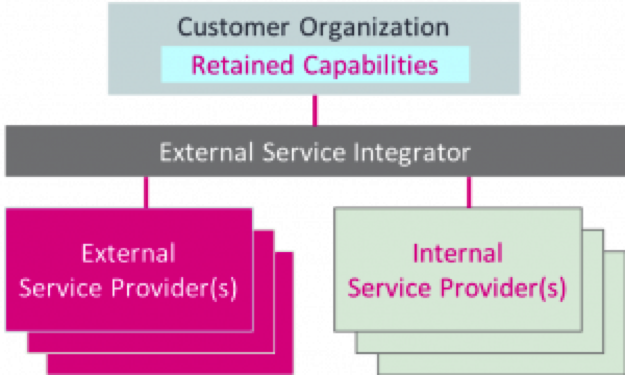The dilemma in a multi-supplier environment.
The other day I was attending a company’s intake meeting when, halfway through, I noticed my client growing increasingly restless. The reason? A major technical issue had occurred that needed their immediate and full managerial attention. So, our meeting was aborted and had to be rescheduled. When we met up a week-and-a-half later, we inevitably ended up discussing what happened during this unfortunate incident. And so it came to light that, over the past four years, this company had been increasingly outsourcing services to external suppliers – mainly for economic reasons.

The dilemma in a multi-supplier environment.
As this case shows, it turns out that one of ITIL’s principles: the requirement to align Underpinning Contracts and Operational Level Agreements with the Service Level Agreements made with the customer, is not as watertight as we’d like to imagine. In fact, it’s fair to say that holes are being found in this system fairly regularly.
Certainly, one of the biggest challenges we face is to deal with the ‘not our fault’ attitude of various suppliers, particularly during the early stages of a detected problem. It’s almost as if these suppliers actively reverse the ‘fix first, argue later’ philosophy, all in a bid to point the finger elsewhere and, to use a Dutch phrase, keep their own doorstep squeaky clean (though occasionally, of course, this is justifiable).
Another unfortunate, regular occurrence is the glaring discrepancy between a service that has been delivered ‘to the letter’ by a supplier and the end-to-end experience of that service delivery by the client.
Luckily for us, it is precisely these types of pinch points that the best practice Service Integration and Management (SIAM) will actively avoid. It doesn’t seek to replace ITIL but promotes a culture of collaboration within its framework, roles, processes and practices so that the client experiences a complete, integrated service – even though this service is being sourced from multiple providers (internal or external).
Within the SIAM model, there is also what has been dubbed a SIAM “ecosystem”, made up of three layers. The first layer is that of the customer, the second involves a mediator role called the Service Integrator, and the third belongs to the internal and external Service Providers.
The Service Integrator could either be sourced internally by the client or be outsourced to a lead supplier or third party supplier, though sometimes.

The Service Integrator basically acts as an intermediary and maintains relations between the external and internal service providers on behalf of the client.
In terms of a business roadmap, the transition from the client’s current set-up to the new system involves four phases, which can be carried out iteratively:
- Discovery and Strategy – The start of the SIAM transition project, making choices, determining strategies
- Plan and Build – Development using the SIAM model, deciding on the Service Integrator
- Implement – Managing the transition to the new SIAM environment
- Run and Improve – Launch the SIAM model, processing, manage teams and tools, and apply Continual Improvement.
Now, the question remains whether my client’s incident could have been avoided if they had adopted the SIAM model. I couldn’t give a hard and fast answer to this, but I can say that SIAM helps to instigate a positive cultural change within a multi-supplier environment. You could even say that the Service Providers, with the help of the Service Integrator, is no longer concerned with just their own doorstep… but the whole street.
Would you like to find out more about SIAM? Join our SIAM Foundation training course
Written by Richard de Boer
